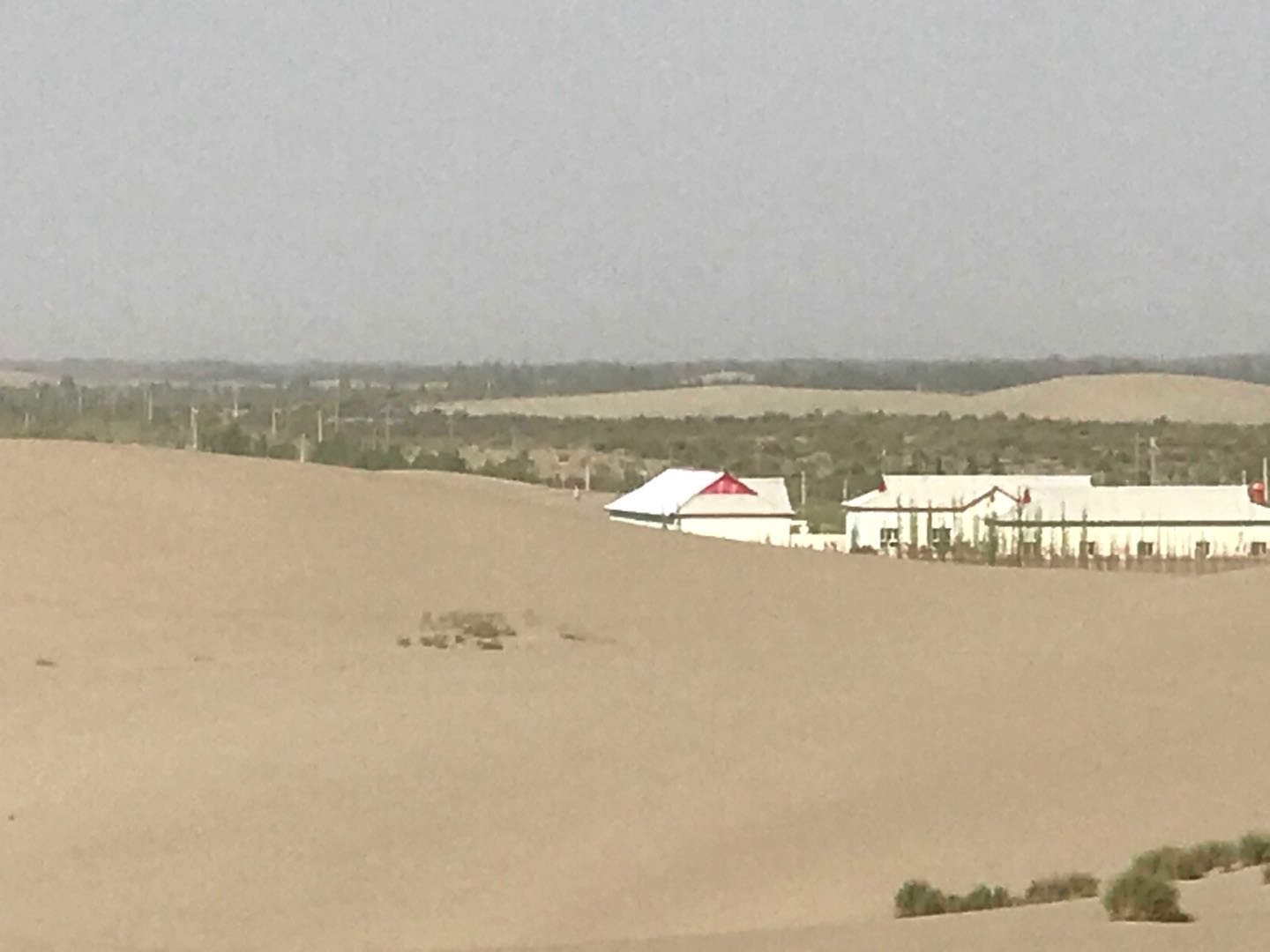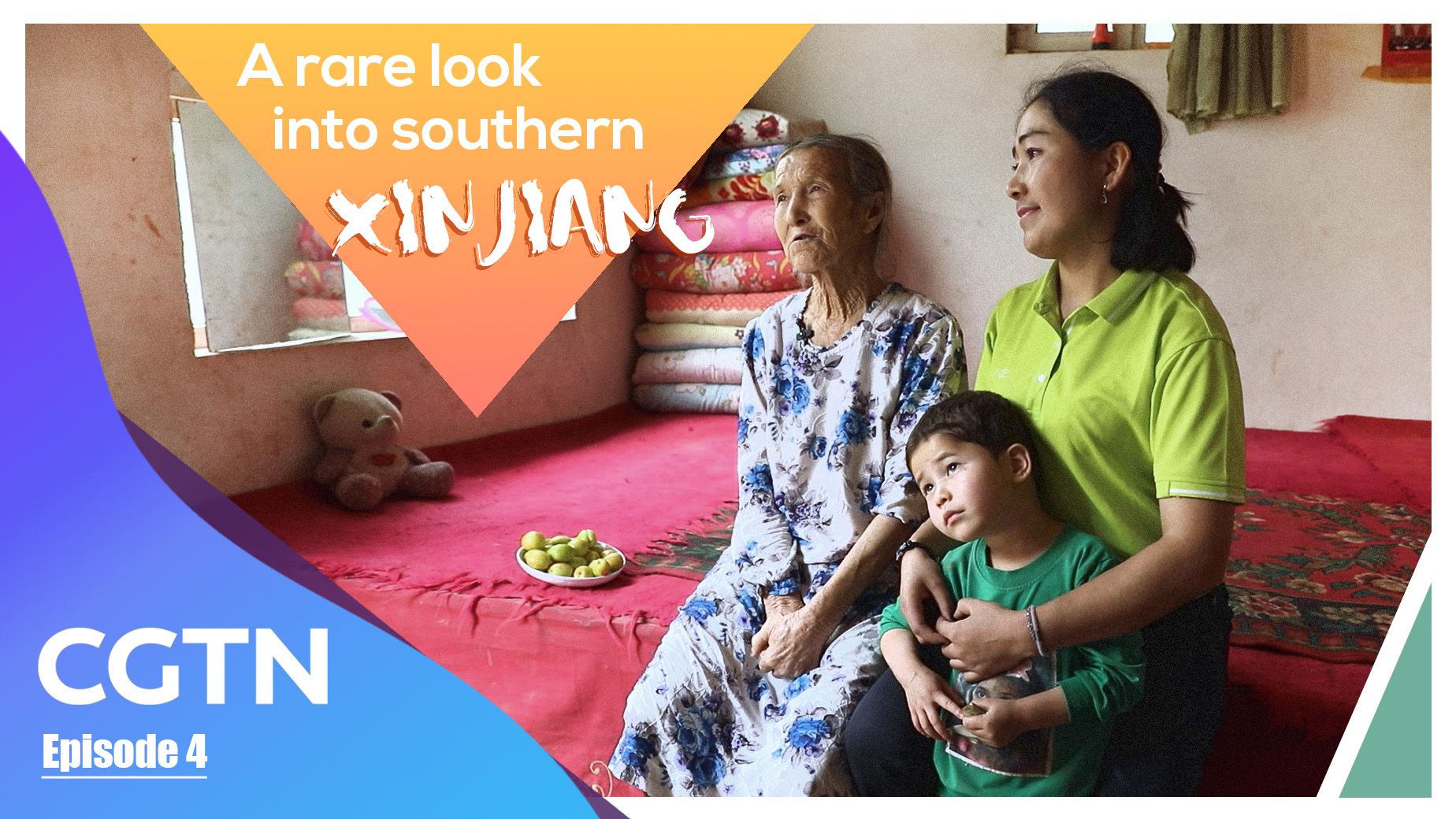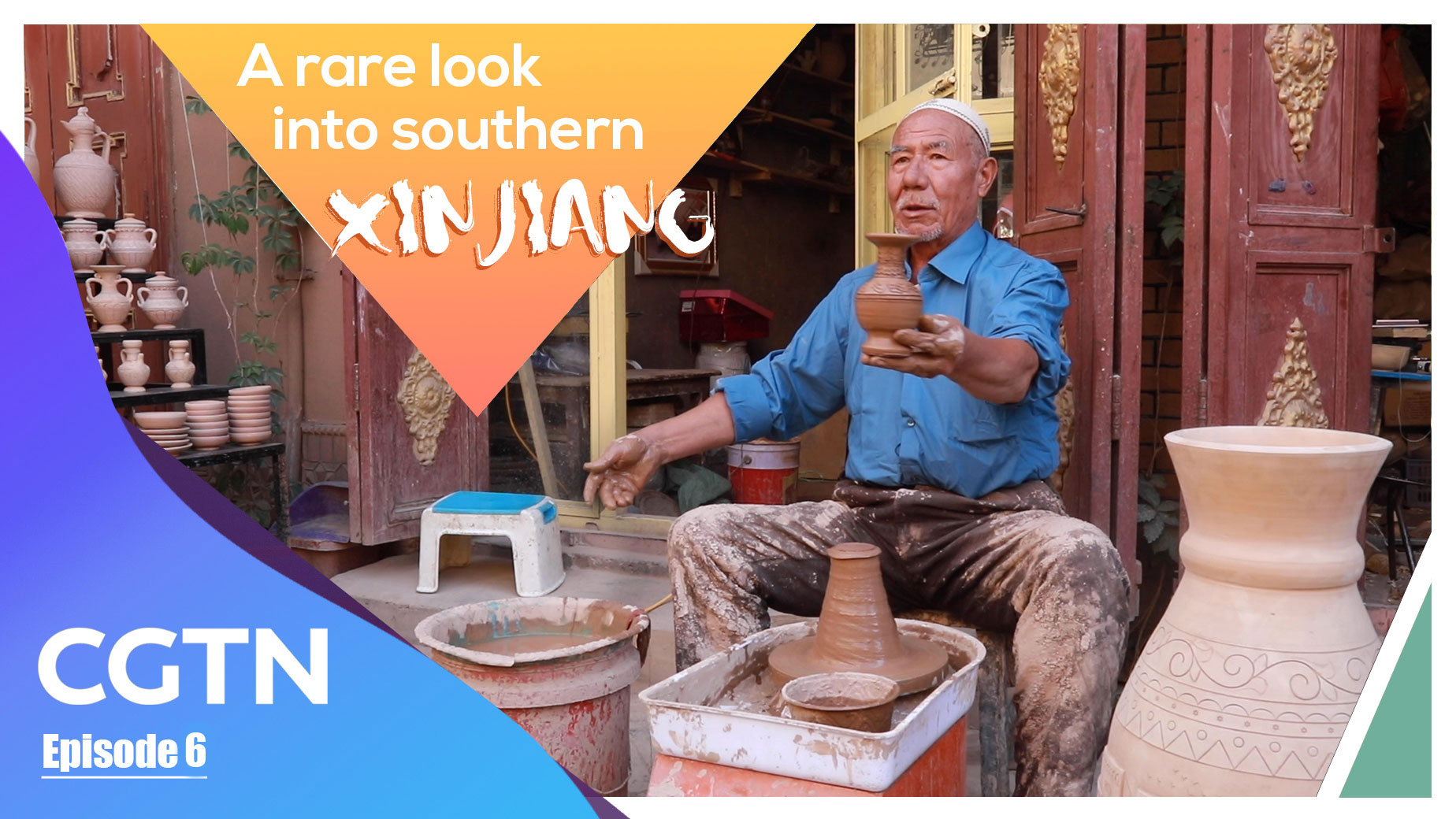"How are you doing? Are you off work now?" This is what Tursungul – a 27-year-old Hotan woman – would ask me on WeChat every other day. Her heartwarming greetings are a reprieve from my fast-paced life in the Chinese capital, where human relationships come and go.
She talks about her work at the factory, regales me with amusing anecdotes of her two children, and tells me about her family's dream to visit Beijing. It was fun and relaxing talking with her. In fact, Tursungul was our first interviewee during our reporting tour in southern Xinjiang.
Back in June, we embarked on an excursion to Hotan, Kashgar and Aksu – the three most impoverished prefectures in the Xinjiang Uygur Autonomous Region – to find out how locals are faring in China's westernmost hinterland.

The Taklamakan desert /CGTN Photo
The Taklamakan desert /CGTN Photo
Our trip to Hotan immersed us in one of the country's poorest and most environmentally harsh places. The prefecture rests on the edge of China's largest desert – the Taklamakan – over 4,000 kilometers from the prosperous coastal cities in the east.
Tursungul once toiled away on the fields, like many women she grew up around, but now she works in a humming factory making gloves. The factory located in downtown Yutian – a county we reached after a four-hour drive along rugged sand dunes – is part of a larger garment industrial park that inland companies established years ago. While employing more than 3,200 locals, these firms also profit from cheap labor and tax incentives there.
Since her husband has a hectic work schedule, Tursungul takes care of their three-year-old daughter and her mother-in-law, who finds it difficult to believe the economic and social opportunities that are now available to modern women. Tursungul only has a middle school education, but her and her family's living quality has improved on this remote land, which now offers 15 years of free education and affordable medical treatments for seniors.
03:05

This sandy, dusty region is mostly infertile, but farming initiatives focusing on cash crops such as roses are injecting vitality into local industries, which have sprung up to process the flower into products such as facial masks and jellies for sale to inland customers.
Even though conditions in Hotan still have a long way to go to reach the material prosperity and health standards of large inland cities, I could see that locals like Tursungul were optimistic about the development there.
Read more: A Hotan woman – from farmer to factory worker
We then headed to the ancient city of Kashgar after spending three days together with Hotan locals from various walks of life. Kashgar, once a shining hub on the ancient Silk Road, remains immune from the passage of time.
There we also felt an entrepreneurial spirit rising from this heritage, as shown by small shop owners who are using their traditional handicraft skills to cater to a growing market for tourists and antique lovers.
Those who stick to a craft passed down for generations are always impressive – Tursun was no different. He comes from seven generations of earthenware potters, and fetches mud from the nearby Tuman River to shape his clay products. He showed us with great pride his best work.
04:17

Memetemin is another craftsman in town, but one that focuses on making classical Uygur instruments. The rawap he was making when we entered his shop is a stringed instrument that dates back to the 14th century. He told us that his father and grandfather were also makers of the rawap, claiming that his family is the largest one making musical instruments in Xinjiang.
We don't see much of these products in Beijing, so my team and I were captivated by their devotion to detail and their pride in making something for people to put in their homes to sing and dance to.
Read more: A slice of heritage in Kashgar's old city maze
What still lingers in my memory is the geniality of the locals as well as a sense that things are getting better. I traveled to southern Xinjiang twice this summer, but I would like to learn more about the region's diverse cultures and the people whose lives are so far yet so close to those from the rest of China.
For a look into our reporting on this region, check out our series "A rare look into southern Xinjiang."
Videos by Yang Shengjie, Zeng Ziyi
Cover image by Yin Yating